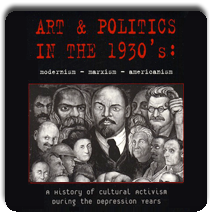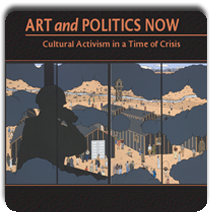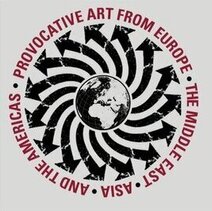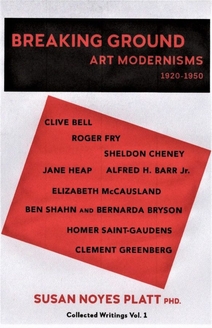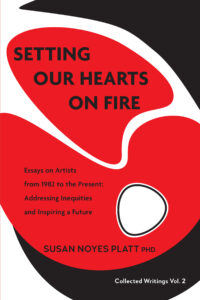Liana Badr Eye of the Mirror
This will be a short but heartfelt post about Liana Badr’s The Eye of the Mirror, a book in the Arab Women Writers series. It was published in 1991 and has just appeared in English. Badr spent seven years interviewing survivors of the massacre at the Tal el-Zaater ( or Tal Ezza’tar) Palestinian refugee camp. This book gives us a perspective on women’s lives in a camp during an onslaught of attacks, in this case in Lebanon in 1976, by “Christian” militias. The description of the progression from a barely lived life in the camps to the attacks and eventual massacre and evacuation of the people who lived there ( including some flashbacks to life in Palestine before the camps)is riveting and heartbreaking. It forms a partner to Joe Sacco’s book discussed below, as it provides the women’s experiences. While Sacco talked to women, this book gives us the day to day detail of their lives, cooking bread, giving birth, surviving with less and less, the courage of children, the deterioation of people even as they keep going, the final fall caused by the loss of the last waterpipe. The constant barrage of sniper’s bullets, the final massacres, random violence, and wanton looting and destruction of the little that was left. There are many characters, mothers, grandmothers, grandfathers, fathers, children, adolescents, young women, all strong people. The book is described usually in terms of one main character, but I felt that all the characters were equally important.
This entry was posted on February 1, 2010 and is filed under "Eye of the Mirror", Liana Badr.
Howard Zinn
Irreplaceable, outspoken voice against fascism. He never stopped speaking up. He is an example for all of us. Like Edward Said, his voice will be heard through the next generation of people he inspired. Terrorism and War 2002 is the book I have read most closely. Written right after 9-11 it zeroes right in on the gigantic military budget and the fact that it has “absolutely no effect on the danger of terrorism. If we want real security, we will have to change our posture int he world – to stop being an intervening military power and to stop dominating the economies of other countries. “
This entry was posted on January 29, 2010 and is filed under Howard Zinn.
Martin Luther King Day

 This is the third year that my grandson Max and I have gone on the Martin Luther King Day March and he is only two years old!. The first year he was only two months old. I have a picture of that on my Flickr site. Last year he was just over one year, and I put that on my Christmas card This year as he marches along he makes it to the blog. His shirt and mine are supporting health care, education, housing and jobs, these are the same issues of economic justce that Martin Luther King spoke so eloquently about as the means of real equality for all races as Bob Herbert wrote so eloquently in his editorial today. As my grandson and I marched, we were surrounded by people who agree, who care, who are uplifted, as I am, every year, by this holiday. The march in Seattle always begins with workshops and a rally, it is more embedded in activism than the church concerts and community celebrations.
This is the third year that my grandson Max and I have gone on the Martin Luther King Day March and he is only two years old!. The first year he was only two months old. I have a picture of that on my Flickr site. Last year he was just over one year, and I put that on my Christmas card This year as he marches along he makes it to the blog. His shirt and mine are supporting health care, education, housing and jobs, these are the same issues of economic justce that Martin Luther King spoke so eloquently about as the means of real equality for all races as Bob Herbert wrote so eloquently in his editorial today. As my grandson and I marched, we were surrounded by people who agree, who care, who are uplifted, as I am, every year, by this holiday. The march in Seattle always begins with workshops and a rally, it is more embedded in activism than the church concerts and community celebrations.
We urgently need to keep political activism going in the community. Last year this day coincided with the inaguration of Barack Obama. Blacks were thrilled, we were all hopeful.
This year we see reality. We are still in the struggle.
Obama may have had all the right ideas inthe world, but when he comes up against the huge forces of power, the corporations, the military, he plays ball. Under FDR the bankers got the first stage of relief in the 1930s, but then he turned to the workers and created huge jobs programs. We can perhaps attribute this and his funding of the arts to Eleanor Roosevelt’s emphatic tours of the country as the eyes and ears of the President. Could Michelle play the same role, it doesn’t seem so.
So Max and I marched for his future, and the future of all of us, and the planet, and in support of a better path. I would love to start a group of activist grandmothers who want to join me in political marches. (can’t join the Raging Grannies, I don’t sing), but who knows how to go about it. I would like Max to understand that organizing in groups and collaborating is essential to a better world. Marching alone is one step, marching together is the next step. Collaborating is the way to power to resist oppression.
I got to one workshop sponsored by Veterans against the War and other groups on how to resist recruiting in high schools. It was really good. The military are going into even elementary schools to start the seduction for recruitment. A young Iraq veteran explained why he had enlisted, for “freedom” which as he said, is at the expense of the oppression of poor people around the world, for “serving a noble cause” which as he said was a lie, as you are killing, torturing and terrifying women, men, and children, and locking up journalists.
This entry was posted on January 20, 2010 and is filed under Martin Luther King march Seattle. activist grandmothers.
Joe Sacco Footnotes in Gaza
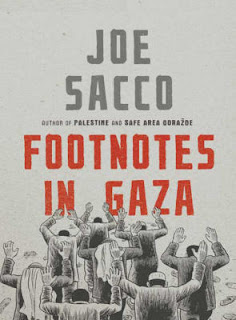 Joe Sacco is profoundly engaged with the experience of war in his new book. It is a major work of art, a telling of the Palestinian Israeli conflict from the ground in Gaza, a layering of time frames, a balance of personal ( not his experience, but that of fighters and families in Gaza) and political. I haven’t read the whole book yet. It is so important that I re-read most pages three times. First for the text, then for the images, then for the ideas. He alternates between large landscape scale images and close up heads of people he talked to, old fighters, survivors of massacres, from decades ago. Sometimes he has a sequence of smaller heads or a family scene. The scenes of families trying to live their lives in one room for twelve people, or having another child because the father may die are heartbreaking.
Joe Sacco is profoundly engaged with the experience of war in his new book. It is a major work of art, a telling of the Palestinian Israeli conflict from the ground in Gaza, a layering of time frames, a balance of personal ( not his experience, but that of fighters and families in Gaza) and political. I haven’t read the whole book yet. It is so important that I re-read most pages three times. First for the text, then for the images, then for the ideas. He alternates between large landscape scale images and close up heads of people he talked to, old fighters, survivors of massacres, from decades ago. Sometimes he has a sequence of smaller heads or a family scene. The scenes of families trying to live their lives in one room for twelve people, or having another child because the father may die are heartbreaking.
The stories that the old soldiers tell, of their house being invaded by Israeli soldiers in 1956 and the mass murder of young men, simply lined up in a square and shot, are horrifying. These men escaped through luck ( they didn’t quite die, when the Israelis shot them over and over, or they ran away), but so many didn’t. Sacco gives us the up close experience of war, hatred, civilian confrontation. Sacco offers no solutions, although he is obviously aware that these people are pawns in political power games, but in depicting the house on the inside, or in one case we are in the line up of the men about to be shot, or we are seeing the devestation from above, we are somehow there. Not really of course, but more than in a photograph, a novel, or a painting.
And I have only read the first 100 pages of 400 pages.
Joe Sacco came to Seattle to speak about his book. One friend of mine described his presentation well “he spoke with the precision of a diplomat, walking through a minefield with a book balanced on his head.” On my first impression, Sacco was understated and modest in his presentation, there was no heavy emotional load on the talk ( only one questioner said what we were all feeling, all the nightmare of the injustice). But then, I thought, he has so much in the book that he doesn’t need to be emotional, and if he were it would have killed him long ago.
His survival is based on his care. His care in research, in protecting his sources, in negotiating war zones, in his brilliant art.
This book is a must read. It is far more complex than his 1996 book Palestine, which was more personal and had moments of humor. This book is set deeply inside Gaza framed around two massacres that occured in 1956 in Gaza, in Khan Younis and Rafah, but giving us backwards and forwards the conditions on the ground for people in Gaza. It was completed before Operation Cast Lead, or at least that atrocity is not cited in the preface. But the devestation it depicts is the same as that of any military conflict of soldiers killing in villages.
The first shock was the image of people literally digging in the sand to find shelter in 1948 when the refugees first arrived. Then the image of them crossing over the lines of Israel to their former land and being called “infiltrators.” Then the fifties style development of housing by the UN, and now the seasoned soldiers who have fought continuously since the 1950s, understanding that the new battle today is beyond their human capabilities to fight, it is about the Israel/U.S. sheer technical killing power with machines.
Sacco wants to make sure that history is not entirely written by people who forget the early massacres that planted the seeds of hatred, as he puts it, quoting from one old man who was a child in the 1950s and saw his uncle die. As Sacco succinctly put it, it is as though the Battle of Britain has been going on continuously to the present day. There is no time for people to recollect, record, they have been in survival mode since 1948. He knows his book can’t really change anything. There are huge powers at work that he cannot affect. But at least we can all know more about the history of this horrible conflict, as the last escape hatch is being sealed by Egypt and Israel with a fence manufactured in the United States.
We all share in the war crimes. We are paying for the equipment. Our support for Israeli military operations this year is almost 3 billion.
Read this book. there are lots of reviews and discussions on line. Here is an example
This entry was posted on January 16, 2010 and is filed under "Footnotes in Gaza", Joe Sacco, Khan Younis, Palestine, Rafah.
Joe Feddersen’s Vital Signs


 These are installation shots from Joe Feddersen’s exhibition “Vital Signs” which closes on Sunday at the Tacoma Art Museum. The exhibition sings with the artist’s poetry based on geometry and landscape. He celebrates ancient history as well as the contemporary land of today. The landscape of the Okanagan , shown in this detail of his wall mural of 500 separate pieces, is open and rugged. He refers to contemporary landscape destructions, like clearcutting, suggested in the brown triangles, and to geometric towers for the high tension wires that gallop across the open land in the center part of Washington State. The Okanagan is, for those who are driving to Spokane on the interstate freeway, a desolate empty landscape, made more desolate by the Grand Coulee Dam which was completed just after World War II. That dam destroyed the ancestral fishing streams of the Colville Indians, the Spokane Indians, and other tribes. There were no fish ladders at that time, the fish were completely unable to return to their spawning grounds.
These are installation shots from Joe Feddersen’s exhibition “Vital Signs” which closes on Sunday at the Tacoma Art Museum. The exhibition sings with the artist’s poetry based on geometry and landscape. He celebrates ancient history as well as the contemporary land of today. The landscape of the Okanagan , shown in this detail of his wall mural of 500 separate pieces, is open and rugged. He refers to contemporary landscape destructions, like clearcutting, suggested in the brown triangles, and to geometric towers for the high tension wires that gallop across the open land in the center part of Washington State. The Okanagan is, for those who are driving to Spokane on the interstate freeway, a desolate empty landscape, made more desolate by the Grand Coulee Dam which was completed just after World War II. That dam destroyed the ancestral fishing streams of the Colville Indians, the Spokane Indians, and other tribes. There were no fish ladders at that time, the fish were completely unable to return to their spawning grounds. Joe Feddersen is a Colville Indian. He comes from that land, it is part of him and his ancestors. After the dam was built, he worked for the power companies, a common occurance with Indians, whose only choice for a livelihood is the use of energy based on exploitation of their lands. But he knows those electrical towers, so when he includes them in a painting they are personal.
He has taught at Evergreen State College for the last twenty years and understands modernism, he understands color theory, his work draws on a sophisticated contemporary aesthetic, and materials- like the shining orange fish traps in glass, or the large vessels with reflective paint on which he has sand blasted the contemporary designs of parking lots and tire treads. In the exhibition he has also included some traditionally scaled woven baskets with tire track designs. He is commenting out of a deep silence and reverence, he accepts the present land, but he reminds us of where we come from, and suggests where we are now. He does not predict the future.
The exhibition has a curiously calming effect, as though we have gone into the landscape to meditate. I could feel his energy flowing through the exhbiition, as the various media, scale, colors, and geometries interacted. He is a master printmaker, a weaver, an artist of sand blasted glass. His connection to time immemorial is moving through all of the works. They are objects for sale now, not integrated with daily use, but they speak of their former functions. Since natives see our relationship to nature, to history, to prehistory, to each other, to animals as all part of a continuous non hierarchical flow of energy, these paintings and other objects suggest that idea as well. Abstract modernism has been re energized with its real sources of power in ancient abstractions.
This entry was posted on January 4, 2010 and is filed under "Vital Signs", Joe Feddersen.
And a tribute to the Gaza Solidarity marchers
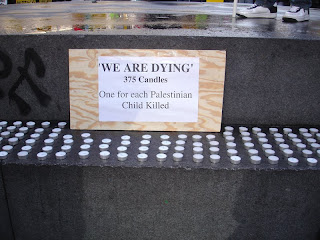
From 42 countries 1300 people came to honor the nightmare of Gaza and the Egyptian government closed the border at Rafah, the only point into Gaza not controlled by Israel. Some are on hunger strike in Jordan. We are all with them. Last year there were marches all over the world in support of the horrors of the Operation Cast Lead. This year people have gone there in support, spurred on by a call from Code Pink and other groups, but are being barred from entering. Protest in NYC . Michael Ratner spoke of the fundamental violation of human rights by Israel in Gaza. He went to Gaza with his family. Currently a few hundred people from the international delegation were allowed to enter, but it was regarded as not enough and an effort to divide the delegation. Thousands gathered on either side to honor the dead and to call for an end to the blockade. In Cairo Freedom Marchers were brutally attacked by the police.
This entry was posted on December 31, 2009 and is filed under Gaza Solidarity.
Honor the Iranians

http://www.youtube.com/watch?v=9y98r5CVP7U
There are several moving slide shows on You Tube of which I am giving a link to one. The photographer Farhad Rajabali has courageously signed some of his photographs. We see so many different people. It is incredible that Ahmadinejad can attribute their activism to Israel and US who have every reason to keep the current government in place as an easy enemy to target.
On this New Year’s Eve we must honor the young Iranians who are showing so much courage in protesting the fascist regime in Iran. It no longer has anything to do with religion, it is a police state. These young people are resisting on so many levels.
Do we have the courage to do that in this country? It is striking to compare the police confrontation in Iran with the one in Copenhagen, young people being arrested by police. But behind those police uniforms are mostly more young people. And in Iran there are also the Basijis the young paramilitaries in the pay of the government who beat up their contemporaries.
This entry was posted on and is filed under Iranian protests.
The People’s Summit in Seattle and Climate Change in Copenhagen

Two weeks ago in Seattle there was a group of people who were preparing for Copenhagen – they were looking back to N30 ten years ago in Seattle and looking to the future planning for the planet. Alli Chagi -Starr told us about her Art and Revolution Another World is Possible Road Show that promoted the anti globalization protest in Seattle. That is her giant puppet above from the original Seattle anti globalization protests. It represnets an corporate octopus that has been muzzled. There were dozens of giant puppets there.
Dena Hoff as a farmer talked about La Via Campesina, the international peasants movement for food sovereignty, a group that is in Copenhagen joining the mass actions as seen in this image

Also speaking was Jihan Gearon of the Indigenous Environmental Network. Jihan is a young woman who is with that group’s Energy and Climate Program and networks with tribal nations to give them support for better solutions and green economic opportunities (instead of the historical opportunities for indigenous peoples to destroy themselves and their culture through accepting jobs in mining coal, oil, and uranium on the reservations). Jihan is talking about where we are now. As she said, we are all going to have to face the lies: we cannot buy our way out and we cannot stop climate change without changing our lifestyle. We must move away from greenwashing ( like carbon offsets) and toward protecting what we have left. The Indigenous Environmental Network is much in evidence in Copenhagen. Thank goodness. They really know what they are talking about. One of the big campaigns is against Tar Sands in Canada.Watch this amazing video. There was a die in in Montreal. to support them.
It is hard to believe how violently the UN and the Danish police are treating both protestors and legitimate participants in the Climate Change conference. This bear is from the Backbone Campaign in Seattle, but the fact that thousands of protestors are being arrested and legitimate groups like Friends of the Earth International are being expelled from the conference, is hard to understand. Could the UN be afraid of the people of the world?
Olivia Zaleski has some good posts about the conference covering youth, grassroots organizing, and exactly how the anarchists were simply a small group who were intentionally disruptive.within thousands of peaceful protestors Amy Goodman has interviewed NNimmo Bassey, Nigerian leader of Friends of the Earth International as he was being expelled from the conference. Today was a plan to “Reclaim Power”.
Is this what it has come to, complete alliance with corporate interests and despoiling the environment? And what about Denmark, it has entirely lost its image as a happy place with socialist leanings ( it was pretty shaky already after the incident of the Mohammed comic book a couple of years ago). We see fascist looking police beating up and putting plastic cuffs on protestors, preemptively arresting thousands. This is incredible. The future of the earth is obviously in the hands of the corporations who have no concern at all except their own profits. They don’t seem to get the fundamental principle that the earth is finite.
This entry was posted on December 16, 2009 and is filed under Copenhagen Climage Conference, People's Summit.
Roger Shimomura and other shows
The Roger Shimomura show “Yellow Terror” at the Wing Luke Museum is a rare opportunity to see the artists collections of racist kitsch juxtaposed to his paintings. The kitsch collections have been given to the Wing Luke Museum, but the really urgent reason to go to the show several times is to see the way he brilliantly uses these racist stereotypes in his art. He barely transforms them, except in scale. We can hardly believe how well he does it.
Yellow Terror, the title piece of the exhibition- this is a detail- is a dizzying array of World War II “Japs,” crammed against each other, flying through the air, climbing on top of each other At the center is the artist himself calmly self caricaturing himself in the midst of the mass of caricatures. The caricatures sources are all on display next to the paintings, and unbelievably, we find ourselves laughing at Shimomura’s humor, at the same time that we know he is deadly serious. Racist stereotyping is so awful, it is hard to believe.

As in Different Citizens, 2009, above, a self portrait next to a Japanese stereotype This is a large painting,three feet by almost four feet. There is Roger on the right, he is an understated quiet person, a distinguished professor. There is the stereotype, the big ears, slanted eyes, big mouth, buck teeth, and the officer on the left.
But the point here is not old/new, The point is that the World War II stereotypes are still with us. Everyday, everywhere. That is why he has included a collection of salt and pepper shakers. Racism with your salt. It permeates, it sits there. The salt and pepper shakers are passive little stereotype”Orientals” in ethnic clothes, waiting to be picked up by larger powers!
Even at the opening, he pointed out an account of a new racist film The Goods, Live Hard Sell Hard” which has a mob beating up a Japanese American. Nothing has really changed except the surface..

Roger’s artistic facility with different vocabularies is also astonishingAs seen in the other painting here, American Portrait no 2, 2002, Shimomura can play with traditional Japanese images, Walt Disney cartoon types, Marvel superhero comics, formalist principles, and all arranged in amazing compositions that are far more complex than they appear to be. This composition with its boxes within boxes and the idea of a may different types of stereotypes juxtaposed to the Kabuki actor playing a warrior from Ukiyo e prints ( is this an “authentic” stereotype?), is all by itself worth a long analysis.I highly recommend Jen Graves article in the Stranger as a great review.
On the subject of opposing racism, a different perspective is offered by the James Washington House exhibition of artists who have had residencies there which is currently on view at the Pratt Gallery. The opening itself was a delight. Tim Detweiller has brilliantly brought together a wonderful mix of artists from different backgrounds, all of them making provocative work inspired by the studio and left -behind materials of the sculptor James Washington. In this installation shot you see Joe Max Emmenger well- known Seattle artist next to Charles Parrish work known only to some communities.
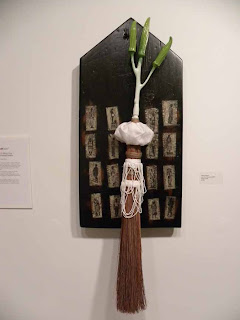 This is Daniel Minter’s work New Path Revealed. It is a subtle work, a broom, with beading and a silk shower cap like top that becomes a ceramic okra plant. In the background are prints of various African American figures in traditional types of work.
This is Daniel Minter’s work New Path Revealed. It is a subtle work, a broom, with beading and a silk shower cap like top that becomes a ceramic okra plant. In the background are prints of various African American figures in traditional types of work.
 Then there is the wooden sculpture by Romson Bustillo called A spell to remember or forget. Bustillo is a brilliant artist and community activist. He is from Mindanao, Philippines. He draws on abstract patterns from textiles here, and other sources to create evocative pieces that contain magical energy.
Then there is the wooden sculpture by Romson Bustillo called A spell to remember or forget. Bustillo is a brilliant artist and community activist. He is from Mindanao, Philippines. He draws on abstract patterns from textiles here, and other sources to create evocative pieces that contain magical energy.
 Esther Ervin’s Pipe Dreams is self contained, elegant, and dreamlike. Ervin is an artist with a subtle sensuality that plays out in different media. At the James Washington House she worked with the wax thread on spools from old recording devices.
Esther Ervin’s Pipe Dreams is self contained, elegant, and dreamlike. Ervin is an artist with a subtle sensuality that plays out in different media. At the James Washington House she worked with the wax thread on spools from old recording devices.
Other artists in the exhibition included Marita Dingus, and Jite Agbro, but I am out of time for now.
The point is that each of these artists is approaching the inspiration of James Washington from their own perspectives and different backgrounds. And the opening was a truly mixed group of artists and audience. Bravo James Washington Foundation.
This entry was posted on November 7, 2009 and is filed under Esther Ervin, James Washington Foundation, Joe Max Emminger, Roger Shimomura, Romson Bustillo.
Bumbershoot How Times Change
I am finishing my book, so my blog has taken a back seat, but I must write a quick note about Seattle’s art festival Bumbershoot 09. I have loved going to this arts festival since I moved to Seattle in 1998. But it certainly has changed. It used to be full of informal creativity, clowns, the amazing spoon man, acrobats, magicians, simply moving through the festival. There was an entire paviilion for publishers and literary readings lasted all weekend.
Now we have high tech spectacles like Flexion by Wise Fool of New Mexico ( muscle acrobatics) and Rockstar Energy Drink Vert Ramp ( skateboarding ). They were big machines . Man and Machine. Also there were lots of other techie booths. The arts and crafts which used to be a highlight have declined dramatically. A few survivors include my favorite hat store, but most of them are not too interesting. That is probably because of the increased cost of a booth has shut out all but rich people, and people who sell well are usually less aesthetic ( I shouldn’t generalize like that, but I can’t help the facts on the ground, the jewelry and clothing was less individually interesting to me).
Literary arts are now simply a few readers and a small display from the Unviersity Book Store. Granted the readers were in a big theater, but the numbers are small. And guess what they were all white people. Whoops. They were funny, talented and in some cases amazing, as in the case of Tara Hardy, who is really formidable. But is spoken word poetry a type of white rap??
The creative performances that I saw were terrific, but they were all really professional! Like Bach’s 40 Goldberg Variations performed entirely by heart by an amazing pianist named Francoise Papillon, accompanied by Mark Haim ( here is one dance) and assorted other dancers ( apparently Jerome Robbins did dances to Goldberg variations, but they costumes were not modern, Improvised Shakespeare, and Performance Space 122 from New York City.
Thank goodness for Greg Lundgren!. He brought back grass roots creativity with his Vital 5 projects. He believes that “our ability to communicate through art is what defines us as human” according to his web site.
He had people dressing up for photographs in random creative clothing, 
designing buildings in cut out paper 
and a documentation of a third project, making an art work in a shopping cart.  They were all in the context of his “Dada Economics” which is one of many projects that he pursues, in this case, random financial awards, that encourage ordinary people to be creative.
They were all in the context of his “Dada Economics” which is one of many projects that he pursues, in this case, random financial awards, that encourage ordinary people to be creative.








